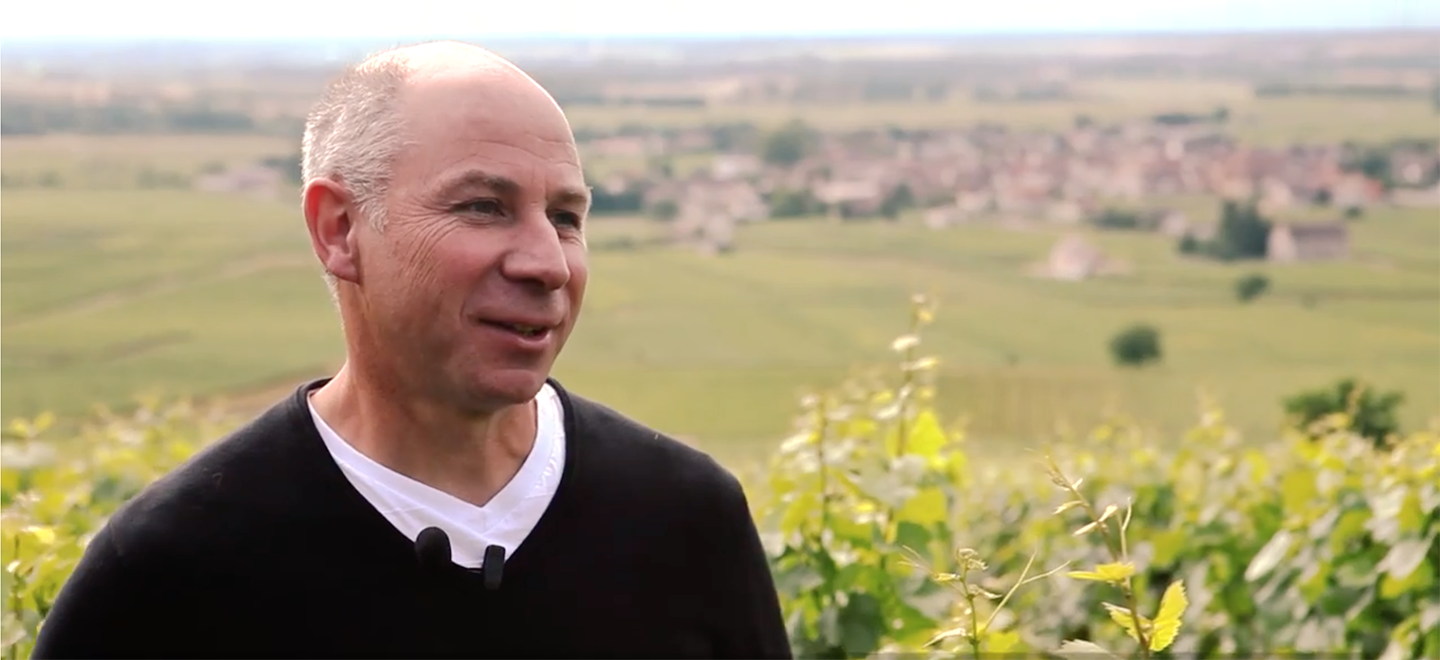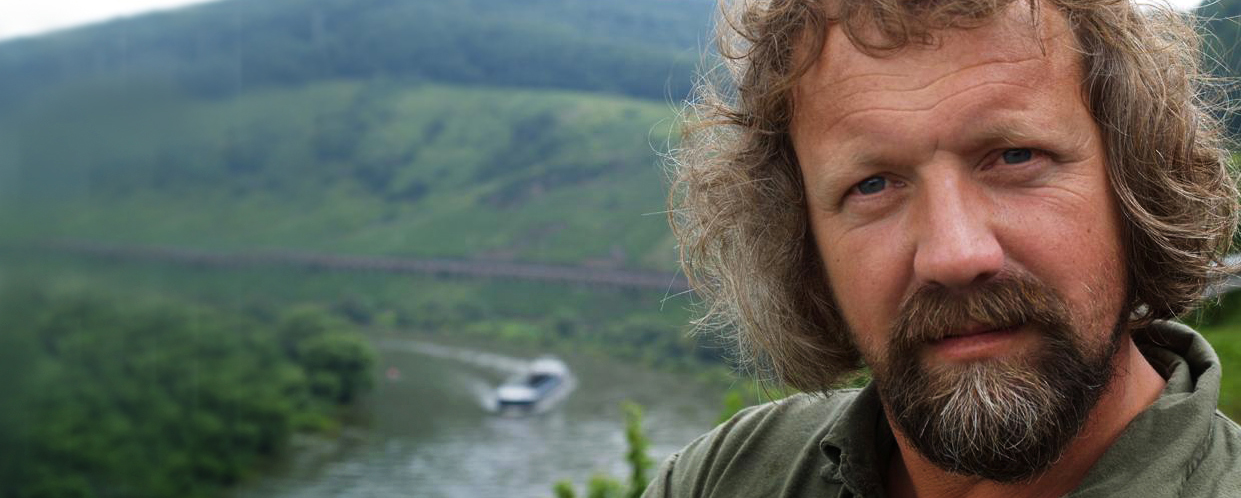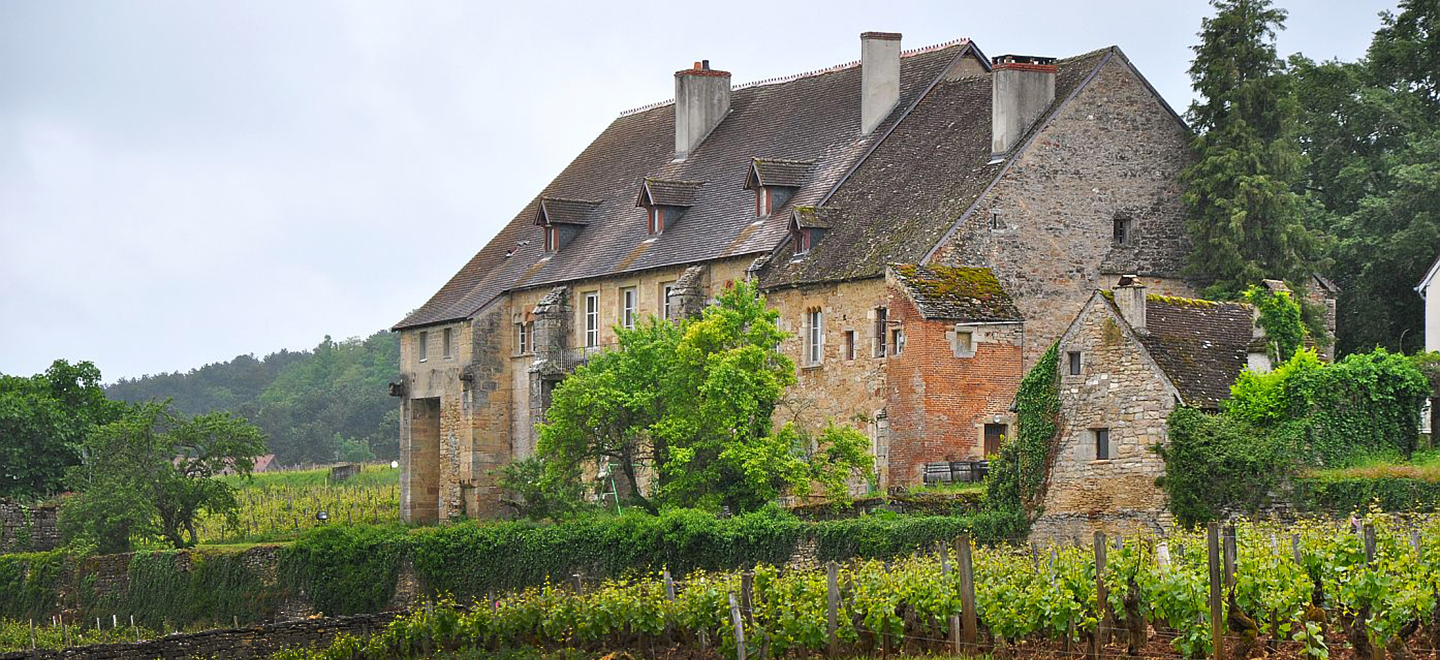Producers
-
Description:
For several generations the Paumel family has farmed grapes in the Rhône Valley. The current patriarch, Jacques Paumel took control of the estate in 1962 from his father, and in 1988 he and his wife Josephine decided to start estate bottling their own wines using the name of the hill on which their ancient provençale farmhouse and many of their vines are situated. Technically semi-retired, Jacques and Josephine have turned over the running of the estate to their daughter Florence and her son Paul Verité.
The Estate is 25 hectares in size with 3 ha in Châteauneuf-du-Pape in the lieu-dits of La Crau, La Guigasse and Saintes Vierges. All are sandy terroirs. The Grenache found in these sites was planted in 1929 or in 1942 while the Mourvedre is a relatively recent addition, having been planted by Jacques in 1967. They have a 1.5 hectare plot of Grenache and Mourvedre, planted on clay limestone soil and located just outside the appellation of Châteauneuf du Pape in the lieu-dit of Clos de Grenadiers. The Grenache dates to 1925 and they are the oldest vines that the family owns. In 1969 Jacques planted Mourvedre and Grenache to supplement these old vines so it now totals 7 hectares. From this site the family makes their Côtes-du-Rhône Villages. In Plan de Dieu they have a newly acquired plot of 70-90 year old Grenache, Mourvedre, Cinsault and Syrah grown on gravelly red clay soils. Finally there are 10 hectares of Grenache, Cinsault and Carignan, also on clay limestone soils and quite near the cellars of Mourre du Tendre. These vines are the source of their Côtes-du-Rhône.
Farming at Mourre du Tendre is minimalist and traditional. Everything is done by hand and the family has never used pesticides in their vineyards. The harvest is conducted in several passes and the grapes are carefully sorted when they reach the cellar. The Paumel family makes powerful and traditional wines and the fruit is not destemmed, fermentations occur spontaneously after a short semi-carbonic maceration, and the elevage is quite long – averaging about three years in a combination of concrete tanks and foudre. The resulting wines are charming, bold and structured with much more in common with Barolo and Barbaresco than most anything else you will find in the region. Needless to say they age beautifully and gracefully, even the Côtes-du-Rhône.
This profile, including all tasting notes and photos, was edited from the European Cellars website. For more information please visit: European Cellars.
Image: Region:
Region: -
Description:
The names Sauzet, Carillon and Leflaive have become synonymous with Puligny, but one local clan has remained under the radar. The Chavy family has had roots in Puligny for almost 200 years. In 1976, after years of selling grapes to négociants, they began to bottle wine under their own label, and Domaine Gerard Chavy et Fils soon established itself as one of the finest domaines in the village; however, in 2003, after a family dispute, the estate was dissolved. The brothers Jean-Louis and Alain Chavy, who had jointly run the domaine, went their separate ways, each determined to build his own legacy.
Alain Chavy is the owner of Chavy-Martin and has some pretty incredible holdings. In addition to the prestigious plots Les Folatières, Le Champs Gain, and Les Pucelles, the domaine owns a precious parcel in Le Clavoillon. Les Pucelles and Les Clavoillons sit adjoined on the slope, but Chavy-Martin is one of only two cellars in Burgundy where you can taste them side by side. Domaine Leflaive owns the vast majority of the 5.59 hectare Le Clavoillon, but the Chavy brothers each claim a small portion, preventing it from being a monopole. Alain farms just under half a hectare of 50 year old vines in Les Clavoillons, and from it he produces a wine of great depth and minerality (and limited availability.)
Image: Region:
Region: -
Description:
Maranges is located at the southern-most part of the Côte de Beaune, producing red wines that Clive Coates describes as “honest, sturdy and rustic in the best sense… (and) with good acidity”. This was the reputation of Maranges, but it's changing, in no small part due to the work of the Chevrot family. The Chevrots have been making wine in Maranges since 1830, and today the winery is run by two brothers, Pablo and Vincent Chevrot. Their parents started bottling wines under the Domaine Chevrot name in the nineteen seventies and the family played a key role in Maranges becoming an appellation, which was finally granted in 1988. Before 1988, wines here were classified simply as Côte de Beaune - Villages. It's worth noting that the appellation of Maranges covers three small villages: Dezize, Sampagny, and Cheilly. Pablo Chevrot was President of the appellation of Maranges for a few years, so if you have any questions about Maranges, he is a good person to start with. Now, aside from managing the winery, he keeps himself busy as a founding member and the Vice President of "Les Aligoteurs", an association of wine growers with old-vine aligoté who aim to promote high quality aligoté, made by talented winemakers.
Today, Domaine Chevrot owns 18.5 hectare of vines; 50% pinot noir, 40% chardonnay, and ten percent aligoté in appellations of Maranges, Santenay, and the Hautes Côtes de Beaune. Their oldest plots were planted by the current winemakers’ grandfather and are up to 75 years old. The brothers, Pablo and Vincent have maintained the traditions of their parents but have built upon their success: starting with conversion of the vineyards to organic viticulture in 2008. Working the soil is important and they own two horses and are now ploughing five hectares by horse. Seeded cover crops are another important element that brings fertility to the soil, aerates and restructures the soil, and limits erosion. Different plant types bring different elements: grains for structure, beans and clover trap nitrogen from the air and it gathers in the roots, getting released back to the soil. And cruciferous plants, like mustard, bring minerals and aerate the soil. They use organic compost in the vineyards and a minimum of copper and sulfur treatments as needed to treat oidium and mildew. They are practicing biodynamics as well but are not certified.
Chevrot's goal is to make wines that reflect their terroir and the vintage, which means as little tinkering in the cellar as possible. The brothers never add enzymes, acidify or chaptalize and the red wines do not see any sulfur until bottling. The entry-level cuvées are destemmed and some whole clusters are kept on the village and 1er cru cuvées. Fermentations are completed only with the indigenous yeasts. The total sulfur is ten milligrams per liter on the reds and 30 - 50 milligrams per liter on the whites. The amount of new oak used depends on the cuvée and it's always used judiciously; Pablo explained that oak is necessary in Maranges because the region produces very powerful wines like Pommard or Nuits-Saint-Georges. The wines show exceptionally well young, something that Pablo attributes to not using much sulfur.
Bowler has been working with Domaine Chevrot since 2010 and its been incredible to follow their journey. Maybe ten years ago, the wines had elements that could have been described as "sturdy and rustic". They were very powerful wines then and they still are today, but now, when I look through my tasting notes, amongst all of the detailed terroir info (Pablo is a fount of knowledge; great terroir map here), I see certain words repeated, "chrystalline, great tension, structured and pretty, yummy," and the highest praise, "excellent!!!" Over the years, they have fine-tuned their work and one word that I agree with Coates on is "honest". The Chevrot wines are a true expression of their terroir and show great purity with nothing added. -Michele Peters, Bowler Portfolio Manager.
Image: Region:
Region: -
Description:
Ron de El Salvador Cihuatán is El Salvador’s only rum distillery. Ron Cihuatán’s story dates all the way back to the ancient Mayan city of Cihuatán. According to legend, a goddess bestowed Cihuatán with riches and fertility, with her spirit watching over the sugarcane fields remaining in the shape of the Guazapa Mountain. This El Salvadorian rum is named after this legend, which in Nahuat “Cihuatán” translates “the land beside the sleeping woman.”
Produced by Licorera Cihuatán, a subsidiary of Ingenio La Cabaña of El Salvador. This rum is made using a 100-year-old sugar cane mill. Licorera Cihuatán distillery was established in 2004 and began distilling and aging their rums. After fermentation the rum is aged in new and used American oak bourbon barrels using the Solera method. The age statement is minimum age.
El Salvador’s first rum, this spirit is handcrafted 100% by Salvadoran hands. “Our rum’s mystical surroundings, our sugarcane and aging methods, mixed with our hard work and patience, give Ron Cihuatán an unmistakable quality,” says Gabriela Ayala, Cihuatán’s Master Blender.Image: Region:
Region: -
Description:
Clairin is an incredibly distinct style of artisinal rum produced exlcusivley on the Island of Haiti. The country is home to an astounding 500-600 micro-distilleries, and hundreds of varieties of sugar cane, each producing a spirit with a personality all it's own. It is deeply connected to the culture and agricultural practices of the country, with its production methods dating back to the colonial era. Clairin is distinct in flavor and production style, setting it apart from other types of rum like those from the Caribbean or Latin America. Clairin is a raw, rustic rum made primarily from sugarcane. It’s often referred to as the “cousin” of rum, and while it is technically rum, it has its own unique identity. Clairin is known for its natural, earthy flavors, which often include fruity, herbal, floral, and vegetal notes. Produced using hand-harvested, hetitage cane, the grower/distillers cultivate their land using sustainable and organic methods. It can be made from sugar cane juice (the base of Rhum Agricole), sugarcane syrup, or both. The completely natural fermentation is slow, in some cases taking upwards of 120 hours. It is then distilled discontinually on small copper or steel pot stills. We are incredibly excited to offer spirit from these 3 phenomenal producers: Patrick St. Surin, Boss Meles Augustin & Dieugrand Marcellus.
Image: Region:
Region: -
Description:
Skye is home to storm-battered mountains, impossible rockfaces and an ancient clan that bares their name. Clan Macleod is a small-batch blended Scotch that brings together hand selected malt and grain whiskies.
Blended Scotch Whisky is a blend of one or more whiskies, which may themselves be made from any combination of malted and unmalted grains. These stunning blended whiskies are the only Blended Scotch whiskies bottled at 46% ABV. No cold filtration. For a rich depth of flavor at a fantastic value.
These whiskies were brought to us by Keepers Quest , Ed Kohl and Ian Macleod. Ian was an Icon of Whisky winner in 2018.Image: Region:
Region: -
Description:
We are honored and excited to be working with Clemens and Rita Busch, biodynamic practitioners in the Marienburg vineyards of Pünderich. Clemens is the fifth generation winemaker at this estate (all the previous ones were also named Clemens; ever the iconoclast, he named his son Florian). Clemens started working in his father’s 2-hectare estate in 1975 and has spent his career expanding the acreage and breadth of his holdings to 18 hectares, almost all on the slopes of the Marienburg. He stopped using herbicides in 1976, then in 1984 he and wife Rita converted to organics. They were among the first in Germany to commit to organic viticulture and led the movement establishing an association of organic growers in 1986. The estate converted to biodynamics entirely in 2005, earning certifications from the EU and Respekt-Biodyn. Clemens holds a permanent place in history as a role model and beacon of change among German winemakers.
Location is crucial to mention here. Pünderich lies essentially at the dividing line between the Middle and Lower Mosel, the wilder and more remote northern section of the Mosel river system. The geology here is unique, based on a volcanic formation hundreds of millions of years old, manifested in a long, undulating cliff face that is nothing short of epic. The three main colors of slate (blue, red and grey) are all found here, dominating different parcels along the slopes across the river from the village. In spite of multiple slate profiles and expositions varying throughout the area, the German government in 1971, in a bureaucratic decision of breathtaking short-sightedness, lumped all these parcels together under one vineyard name, the Marienburg. Furthermore, they expanded what was a 23-hectare geographically coherent site into a 90-hectare politically drawn one, which even includes a series of flat sites on the opposite side of the river! Clemens has devoted his career to rectifying this mistake, identifying the different terroirs of the original hillside on his labels by their historical names: Fahrlay, Falkenlay, Rothenpfad, Felsterrasse, and Raffes. He further delineates his wines by their soil type, using an ingenious method: the color of the capsule on the bottles indicates the type of slate (blue, gray or red) that dominates the source from which each wine comes.
Most of the wines at the Busch estate are vinified dry, and they are rich, complex and often powerful. They age very beautifully, gaining in complexity and texture. However, the sweet and noble sweet wines from the estate are also impressive, ranking among the finest wines made anywhere on the Mosel.
It is important to note there are not a lot of committed "natural" winemakers in Germany in the sense that we know it from France and elsewhere; Busch is considered by many to be THE master interpreter of that philosophy in Germany. In numerous ways, these are some of the most iconoclastic wines we have ever tasted. More information is available on the Clemens Busch website.
Image: Region:
Region: -
Description:
For more information on Clos Bateau, please visit Selection Massale.
Available in California.
Image: Region:
Region: -
Description:
Clos de la Perrière is an exceptional place and Bénigne Joliet has made it his life's mission to make wines from this site reflect the historied and special terroir. The Cistercian monks valued the Clos de la Perrière as a top site in all of Burgundy and Joliet continues to make wines in the same cellar built by the monks in 1142. The historic, vaulted cellar contains an enormous vertical press, also from 1142, which Joliet’s grandfather used until 1959.
Bénigne Joliet’s family purchased the Clos de la Perrière in 1853, making Bénigne the sixth generation to own the five-hectare monopole domaine in Fixin. Because of the inheritance laws in France, the vineyard was fragmented among his ancestors over the years. His great grandfather and grandfather used to sell off the grapes and juice. In recent history, his father was the first to bottle under the domaine name in the 1970’s. His father made wine in the same way every year and did not account for vintage variances, so the quality fluctuated. Bénigne worked with his father for ten years and in 2004 came to the conclusion that he wanted to purchase back the entire Clos from his family (aunts, uncles, and cousins) with the goal of making the Clos de la Perrière a reverential wine once again.
The Clos de la Perrière has a truly magical feel to it and a special microclimate. It’s at the same elevation as Echézeaux and the top of the Clos de Vougeot. It sits at the top of the slope, above the village, just next to the forest. The five hectares are a true clos, surrounded entirely by a wall, with the chateau/winery at the northern border. The Clos de la Perrière has different soils and Joliet vinifies each separately. One area is very stony and rich in limestone, another has more clay, the third area has a mix of clay and limestone and then the area near the woods at the top of the slope is cooler than the rest of the vineyard. The oldest vines are nearly a hundred years old and overall the average is about fifty.
Joliet farms organically, although he has not sought certification. Flowers and grass grow between the vines and the prunings are left on the ground to add to the humus. In the cellar, Joliet uses partial whole clusters for fermentation depending on the vintage and the primary fermentation happens spontaneously in stainless steel. The wines are then moved to age in the same vaulted cellar that was built by the monks. The amount of new oak varies depending on the vintage and the amount has been reduced steadily since 2005. The wines are not forced and undergo malolactic fermentation at their own pace. As mentioned earlier, Joliet vinifies by parcel and each terroir gives it’s own distinct impressions. Each is interesting on it’s own, but the blend is like hearing a symphony instead of a solo. Joliet treats his vineyards as his own private garden and feels that “it is really a privilege to live and make wine here at Clos de la Perrière.”NY Times 2022 Article here.
Image: Region:
Region: -
Description:
Thank you to importer Louis/Dressner for this profile:
(Click here for more Roilette insight on LDM's website)
The Clos de la Roilette, a lieu-dit in the village of Fleurie, covers nine hectares of one of the best slopes in the Beaujolais Crus. The clos has an eastern exposure, borders the Moulin-à-Vent appellation, and produces wines that are beautiful when young and have the capacity to age 5-10 years, depending on the vintage.
In the 1920’s, when the Fleurie appellation was first created, the former landowner was infuriated with losing the Moulin-à-Vent appellation under which the clos had previously been classified. He created a label, using a photograph of his racehorse Roilette, and used the name Clos de la Roilette without mentioning Fleurie. The owner vowed not to sell a drop of his wine on the French market and the production went to Switzerland, Germany and England.
By the mid-1960s, the owner’s heirs had lost interest in the clos and a large portion of the land had gone wild and untended. In 1967, Fernand Coudert bought this poorly maintained estate and replanted the vineyards. His son Alain joined him in 1984, and has been the winemaker since.
The Couderts say their particular terroir (mainly clay and manganese), and the age of their vines account for the richness of their wine. It has a deep blackcurrant color with a hint of purple, a restrained nose of crème de cassis, a rich, full mouth with aromas of cassis, black cherries, and a nutty character, and finishes with zesty acidity. This is a wine that ages gracefully and takes on the aromatic character of a Pinot Noir.
With the 1998 vintage, the Couderts introduced a new wine, "Cuvée Christal" (recently renamed "Cuvée Christie") which is lighter and meant to drink younger. A few years later, they started a selection of old vines cuvée. They call this "Cuvée Tardive", meaning that it needs more aging time and has even greater longevity than the regular Fleurie cuvée. Finally, the most recent addition is a wine called "La Griffe du Marquis", made from the same old vines that produce "Cuvée Tardive" but vinified and aged exclusively in Burgundian barrels.
Image: Region:
Region:
